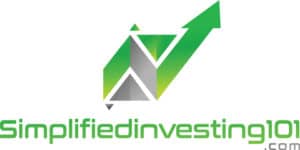
Launched on March 2019, Wealthsimple Trade is a relatively new platform in Canada. They have no physical branches. For the most part, their platform is mostly online, with their main branch in Toronto.
People are rightfully skeptical especially the first time hearing about Wealthsimple Trade. After all, users are transferring money to the Wealthsimple Trade app and asks for personal information when opening an account.
That begs the question, is Wealthsimple Trade legit and safe?
In case Wealthsimple and ShareOwner Inc. go bankrupt, Wealthsimple Trade accounts are safe since they are CIPF insured, up to $1 million per account. Wealthsimple Trade is a division of Canadian ShareOwner Investments Inc. Like the big banks, ShareOwner Inc. is a CIPF member and regulated by the IIROC to protect investors.
Wealthsimple Trade is a division of Canadian ShareOwner Investments Inc. (ShareOwners Inc.), an organization that has been around for 30+ years. In case Wealthsimple Trade has gone bankrupt and ShareOwner Inc. is still in business, you can keep your stocks with ShareOwner or transfer to other platforms like the big banks.
IIROC (Investment Industry Regulatory Organization of Canada) is the national self-regulatory organization that oversees all investment dealers and trading activity on debt and equity marketplaces in Canada to protect investors. (iiroc.ca)
The CIPF (Canadian Investor’s Protection Fund) insurance will kick in if both Wealthsimple Trade and ShareOwner Inc. have gone out of business. In this case, investments up to $1 million per account are CIPF-insured.
Trading stocks was only available through the Wealthsimple Trade app. It’s only recently, in 2021, that trading directly through their website on a desktop is possible.
Kinds of Investments that are CIPF Insured
According to CIPF.ca, they cover cash, securities, futures contracts, and segregated insured funds in the event of insolvency, that is, if a CIPF member firm has gone bankrupt.
Securities include bonds, GICs (guaranteed investment certificates), shares or stocks of a company, units or shares of an investment fund such as a mutual fund or an ETF (exchange-traded fund), and units of limited partnerships.
Currently, people can hold stocks (US and Canada stocks), ETFs, and cash inside the Wealthsimple Trade platform. These three assets qualify for CIPF insurance.
How to Confirm ShareOwner Inc. is a Member of both CIPF and IIROC
Here is a link to the list of current CIPF members on cipf.ca. Canadian ShareOwners Investments Inc. is listed there. Other notable CIPF members include RBC Direct Investing Inc., TD Securities Inc., Scotia Capital Inc., etc.
The IIROC (Investment Industry Regulatory Organization of Canada) is the national self-regulatory organization which oversees all investment dealers and trading activity on debt and equity marketplaces in Canada.
IIROC Website
Equity means stocks, debt refers to bonds, and an example equity marketplace is Toronto Stock Exchange (TSE) where people can trade stocks.
To confirm, here is a link to the list of dealers IIROC regulates, to iiroc.com. Assets inside Wealthsimple Trade is held by Canadian ShareOwner Investments Inc.
Canadian ShareOwner Investments Inc. is listed as a dealer member. Other dealer members include BMO InvestorLine Inc., CIBC Investor Services Inc., Scotia Capital Inc., RBC Direct Investing Inc., etc.
When visiting ShareOwners.com, they inform that they have moved to the Wealthsimple Trade website.
Investors automatically receive coverage by opening an account with a CIPF member.
Limitations to CIPF Insurance
CIPF insurance will only kick in during the insolvency of a member firm, that is when ShareOwner Inc. has gone bankrupt. Also, CIPF will consider a firm insolvent when “clients no longer have unrestricted access to their accounts if, for example, the member firm is suspended by IIROC.”
CIPF will only insure up to $1 million if ShareOwers Inc has gone bankrupt. It may take weeks to get the money back through CIPF.
Because of these, diversifying and having an investment portfolio divided into two or three different platforms may be optimal, especially if the total value of the portfolio is over $1 million. Even if one platform has gone bankrupt, an individual can still have immediate access to investments instead of waiting a couple of weeks.
CIPF will not insure a drop in the value of your investments for any reason. Investing in stocks or any assets still has its own risks and upsides. Let us say a person has bought 10 stocks at $100 each and the value of the stocks has gone down to $80 each.
CIPF will not guarantee the value of any investments. Instead, it will return the value of assets based on the date when the member firm has gone bankrupt. If the value of those stocks was at $80 each when the member firm has gone bankrupt, CIPF will return that amount.
For example, if a person has bought Apple stock and its price has gone down and sold it, that would result in a loss. This loss is not CIPF insured. Investing has its own risks and upsides.
CIPF insurance will only kick in if a CIPF member investment dealer (ShareOwner Inc.) has gone bankrupt. In this case, it will return the value of your portfolio based on the date of a CIPF member bankruptcy, up to $1 million.
How Much is CIPF Insured
These three points are from the coverage page on the CIPF website.
- $1 million for all general accounts combined (such as cash accounts, margin accounts, and TFSAs), plus
- $1 million for all registered retirement accounts combined (such as RRSPs, RRIFs, and LIFs), plus
- $1 million for all registered education savings plans (RESPs) combined where the client is the subscriber of the plan.
Wealthsimple Trade currently offers Personal, TFSA, and RRSP accounts. Investments with a combined value of up to $1 million are CIPF insured inside Personal (cash account) and TFSA accounts. In addition, another $1 million is CIPF insured on the RRSP account.
Is Wealthsimple safe for SIN?
Wealthsimple and other investing platforms like the big banks in Canada are safe for SIN since they are regulated by the IIROC. SIN is required to comply with IIROC rules, securities regulations, and federal legislations such as anti-money laundering and tax legislation for income tax purposes. (Source)
This helps the CRA to confirm that the right amount of taxes are declared and tracks the amount of deposits to registered accounts such as TFSA and RRSP.
Also, it confirms the identity of the person holding the assets. If SIN is not required, other people may be able to use an individual’s name and address and make them accountable for other people’s taxes.
Registered accounts like TFSA and RRSP offer tax advantages when used correctly, but can have penalties if an individual over contributed to these accounts, or pays higher taxes if not correctly used.
To be aware of the rules for each account, here is an article for a full comparison between Personal, TFSA, and RRSP accounts.
IIROC sets high regulatory standards for the investment industry to protect investors and strengthen market integrity. IIROC monitors and enforces rules for the business conduct and trading activity of these investment firms and their
individual investment advisors. (iiroc.ca)
Wealthsimple Trade Assets
Since Wealthsimple is still a private company, we do not have any idea what are the actual numbers on their balance sheet. (Unlike public companies like the big banks, which their stock can be bought on Toronto Stock Exchange and are required to file their balance sheet every 3 months.)
Wealthsimple has raised $610 billion recently, valued at $4 billion valuation. This funding certainly put them in a better financial situation.
With $8.4 billion in assets under management and more than 1.5 million users, Wealthsimple seems to be in good financial shape.
How Wealthsimple Trade makes Money
Wealthsimple Trade makes money by charging a 1.5% exchange rate fee when clients are trading stocks in US dollars. In addition, they offer $3 a month subscription for clients who want to have access to real-time stock quotes and up to $1,000 instant deposits.
On the free plan, users can only deposit up to $250 instantly and have 15 minutes delayed stock quotes.
Outsourcing real-time stock quotes to free apps like the stocks app, Webull app, Yahoo finance app or google search may be an option to avoid the $3 subscription fee.
Wealthsimple day trading in Canada
Day trading on Wealthsimple is best for stocks in Canadian dollars since there are no commission fees on any amount of trades in CAD. Day trading US stocks on Wealthsimple costs 1.5%, which can easily add up over time. Day trading US stocks may be better with other platforms.
Day trading in a Personal account on Wealthsimple Trade is allowed since it is a non-registered account. Also, losses on a non-registered account can be tax deductible while losses on a TFSA account are not tax deductible.
Day trading on Wealthsimple is limited to stocks and ETFs while other platforms may offer stocks, mutual funds, ETFs, options, etc.
